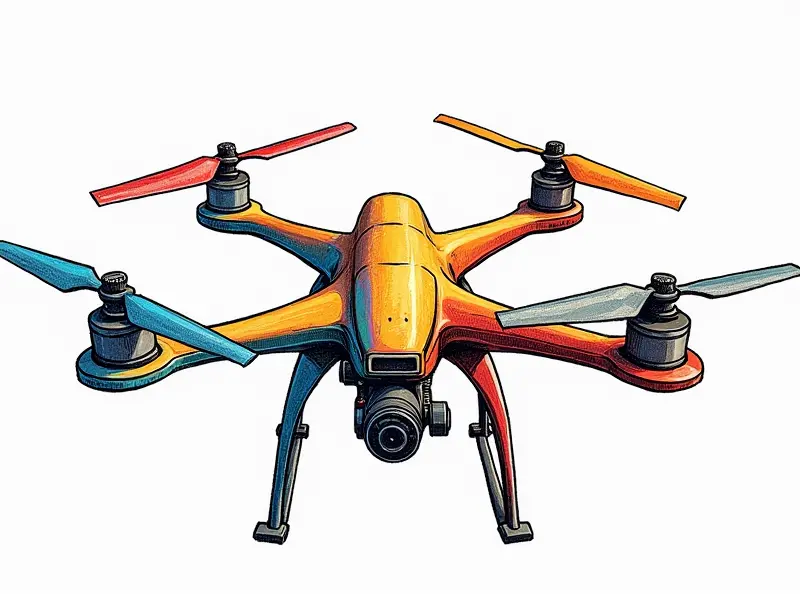What is rudder in RC airplanes?

Understanding Rudder Function in RC Planes
The rudder is a critical control surface on remote-controlled (RC) airplanes that plays a pivotal role in maneuverability and stability. Unlike the elevator, which controls pitch, or the ailerons, which manage roll, the rudder specifically controls yaw—the movement around the vertical axis of the plane. This allows pilots to steer their RC aircraft left and right effectively.
Why Rudder is Crucial for RC Plane Stability
The importance of the rudder in maintaining stability cannot be overstated. It helps counteract adverse yaw, a phenomenon where turning causes unwanted movement opposite the direction of intended flight. By applying proper rudder input during turns, pilots can ensure smooth and controlled maneuvers without compromising stability.
Mastering Rudder Use for Better RC Plane Flight
To achieve optimal performance in RC planes, mastering the use of the rudder is essential. Proper rudder control allows for precise directional changes, enhancing overall flight dynamics. Pilots who understand how to integrate rudder movements with other controls can execute complex maneuvers effortlessly.
Tips for Improving Your Rudder Skills in RC Planes
- Practice Basic Turns: Start by performing gentle turns using the rudder while keeping a steady throttle. This helps develop muscle memory and enhances control over yaw movements.
- Use Trim Settings Wisely: Adjusting trim settings can help maintain neutral stability, making it easier to focus on rudder inputs during flight.
- Experiment with Different Airspeeds: Understanding how airspeed affects the effectiveness of your rudder control is crucial for adapting to various flying conditions.
Exploring the Impact of Rudder on RC Airplane Performance
The rudder significantly influences an RC plane's performance, particularly in terms of maneuverability and stability. Effective use of the rudder can improve turn radius, reduce adverse yaw effects, and enhance overall flight control. Conversely, poor rudder management can lead to instability and compromised handling.
Beginner's Guide to Using Rudder on RC Planes
For beginners, getting acquainted with the rudder requires patience and practice. Start by familiarizing yourself with basic maneuvers such as straight-line flying and gentle turns. Gradually introduce more complex movements like coordinated turns and steep banks.
Demystifying Rudder Control in Remote-Controlled Aircraft
Understanding how to control the rudder effectively involves recognizing its interaction with other flight controls. Coordinating rudder inputs with ailerons and elevator is key to achieving smooth, controlled flights. Learning these coordination skills can transform your RC flying experience.
Basics of Using the Rudder on RC Models
The basics involve understanding that the rudder deflects left or right to steer the plane. Moving the rudder control stick to the left will cause the tail to yaw left, and vice versa. This simple yet crucial movement is fundamental for directional flight.
Tips for Improving RC Plane Handling with Rudder
- Practice Ground Control: Before flying, practice rudder control on the ground using a trainer mode or simulator to get comfortable with inputs.
- Leverage Adverse Yaw Awareness: Recognizing and countering adverse yaw can significantly improve your plane's stability during turns.
- Incorporate Rudder for Steep Turns: Using rudder in conjunction with ailerons during steep turns prevents excessive bank angles, maintaining control over the aircraft.
What Every Beginner Should Know About Rudder
Every beginner should understand that mastering the rudder is foundational to becoming an accomplished RC pilot. It’s not just about steering; it's about achieving stability and precision in flight maneuvers. Familiarize yourself with basic principles, practice regularly, and gradually build up your skills.
Tips for Effective Rudder Maneuvers in RC Planes
- Smooth Inputs: Apply rudder inputs smoothly to avoid sudden movements that could destabilize the plane.
- Proper Timing: Time your rudder inputs correctly, especially during turns and transitions between maneuvers.
- Maintain Balance: Keep a balanced approach by coordinating rudder with other controls to maintain stability throughout flight.
Conclusion
The rudder is an indispensable control surface in RC planes, essential for achieving precise directional movement and maintaining stability. By understanding its function, practicing effective use, and integrating it seamlessly with other flight controls, pilots can significantly enhance their flying skills and enjoy more rewarding flights.

